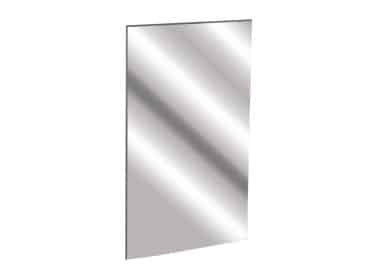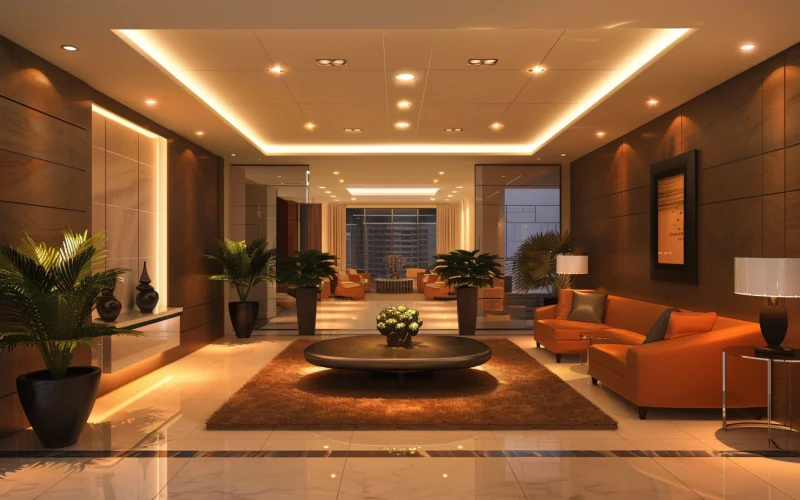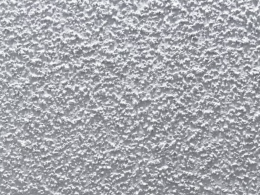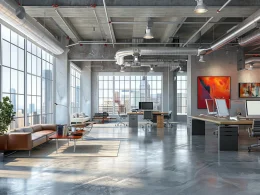Ceilings play a crucial role in interior design. They often serve as the fifth wall, transforming a room’s look and feel.
In recent years, homeowners and designers have been exploring various open-ceiling ideas to add character, depth, and style to their living spaces.
The options are endless, from exposed beams to coffered designs and tray ceilings to painted and wallpapered finishes.
This blog post will examine the most popular ceiling trends in modern interior design, discussing their benefits and drawbacks and how they can be incorporated into different design styles.
Whether you want to create a rustic charm, add sophistication, or make a bold statement, understanding these current ceiling trends will help you make informed decisions when renovating or building your dream home.
So, let’s explore the world of open ceiling ideas that can enhance your interior design to new heights.
Top Ceiling Options High-on-Trend to Choose from
Apart from the conventional ceiling option, there are various options to choose from that can enhance the overall look of your home.
Here are a few that are worth considering among the other options available in the market.
1. Exposed Beams
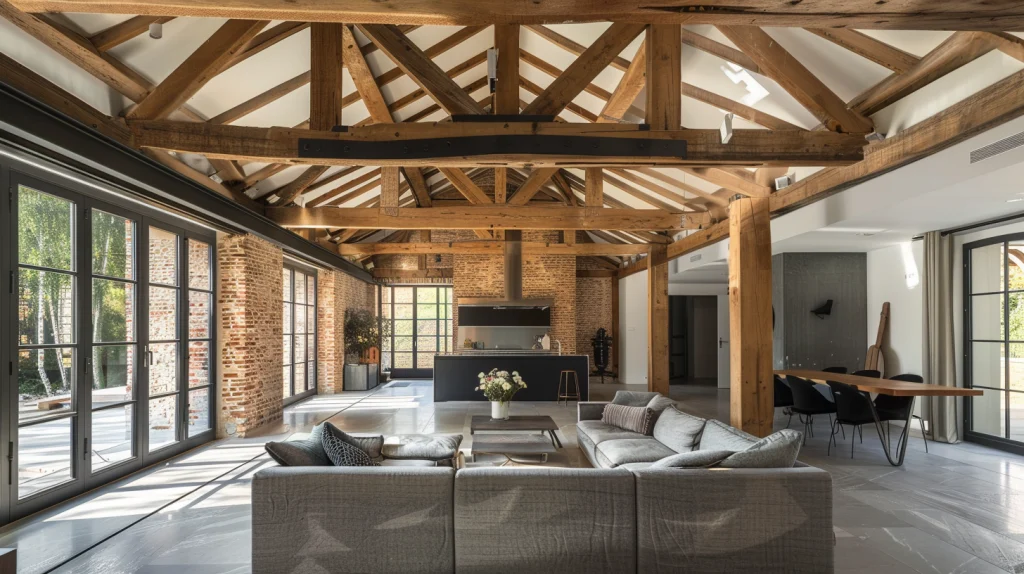
Exposed beam ceilings have gained immense popularity recently, particularly in homes with rustic, industrial, or farmhouse aesthetics.
This design feature involves leaving the structural beams of the ceiling exposed, often made of wood or metal.
The benefits of exposed beams are numerous, as they add warmth, texture, and visual interest to a room.
They can also make a space feel more expansive and open; however, some drawbacks include the potential for dust accumulation and the need for regular maintenance.
Exposed beam ceilings work particularly well in living rooms, dining areas, and kitchens, where they can create a cozy and inviting atmosphere.
They can also be paired with other design elements, such as white walls or industrial light fixtures, to enhance the room’s overall style.
2. Coffered Ceilings
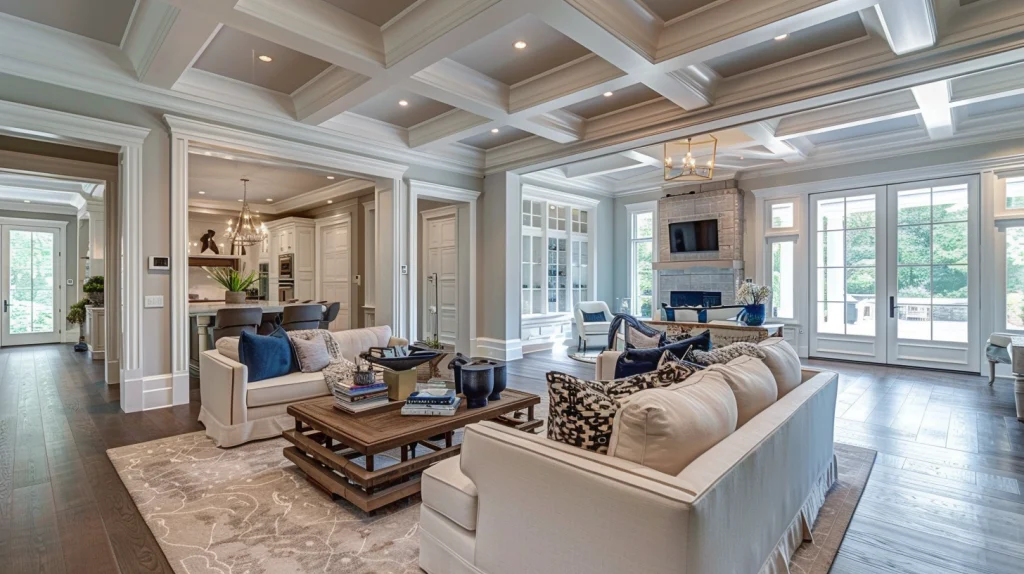
Coffered ceilings are another popular trend in modern interior design. These ceilings feature a grid-like pattern of recessed panels, typically wood or plaster.
The depth and dimension created by the coffers add a sense of sophistication and luxury to any room.
Coffered ceilings work particularly well in formal spaces, such as dining rooms, libraries, or home offices, where they can create a stately and refined ambiance.
The materials used in coffered ceilings can vary, from rich hardwoods to painted plaster, allowing homeowners to customize the look to suit their style and overall home design.
3. Tray Ceilings
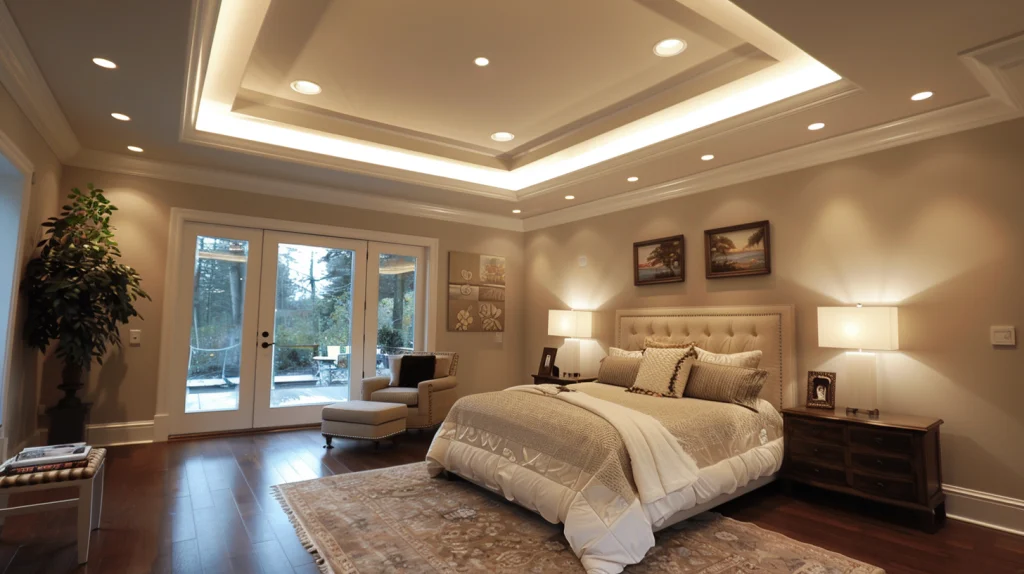
Tray ceilings, also known as recessed ceilings, are popular for adding depth and dimension to rooms.
This design features a raised central inset, creating the appearance of a tray. Tray ceilings are particularly effective in making a room feel more spacious and grand.
They work well in master bedrooms, formal living rooms, and dining areas, where they can create a sense of sophistication and refinement.
Tray ceilings can be further enhanced by adding lighting, moldings, or painted finishes to suit the homeowner’s taste.
4. Painted and Wallpapered Ceilings
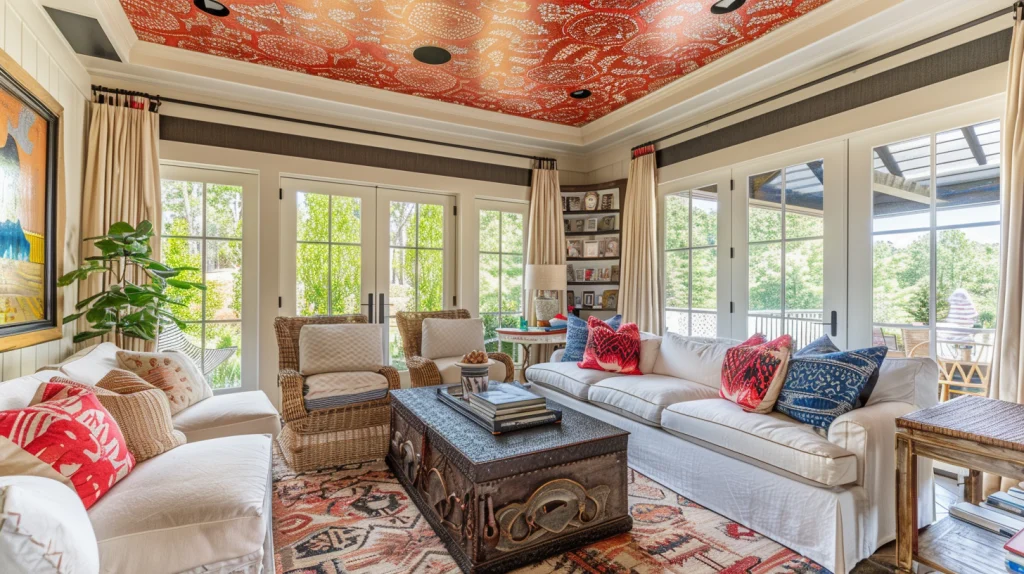
For those looking to make a bold statement, painted and wallpapered ceilings are a trendy option.
Incorporating bold colors or patterns on the ceiling can create a striking focal point and add personality to a room.
When choosing colors or patterns, consider the room’s overall style and the mood you want to create.
Lighter colors can make a room feel more spacious, while darker hues can add intimacy and coziness.
Wallpapered ceilings can introduce texture and visual interest, with options ranging from subtle patterns to bold and whimsical designs.
To ensure a cohesive look, consider coordinating the ceiling color or wallpaper with other elements in the room, such as the walls, furniture, or accessories.
5. Textured Ceilings
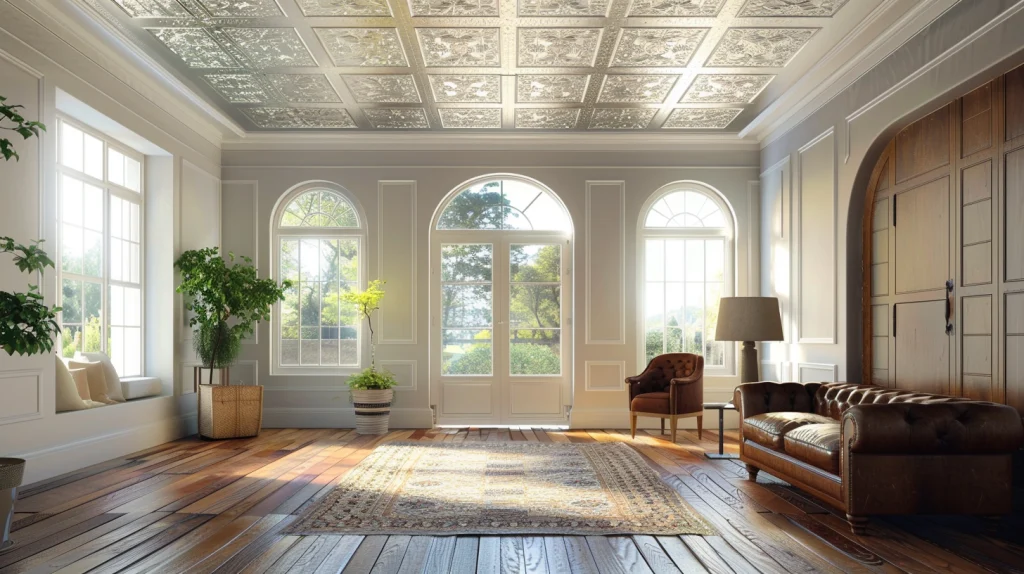
Textured ceilings are another way to add visual interest and depth to a room. Various materials, such as tin, wood, or plaster, can be used to create a textured ceiling.
Tin ceilings, for example, can give a space a vintage or industrial feel, while wood can create a warm and rustic ambiance.
Plaster textures can range from subtle swirls to more intricate designs, adding a touch of sophistication and refinement.
When considering a textured ceiling, it’s important to consider the maintenance and installation requirements, as some materials may require specialized care or professional installation.
6. Minimalist Ceilings
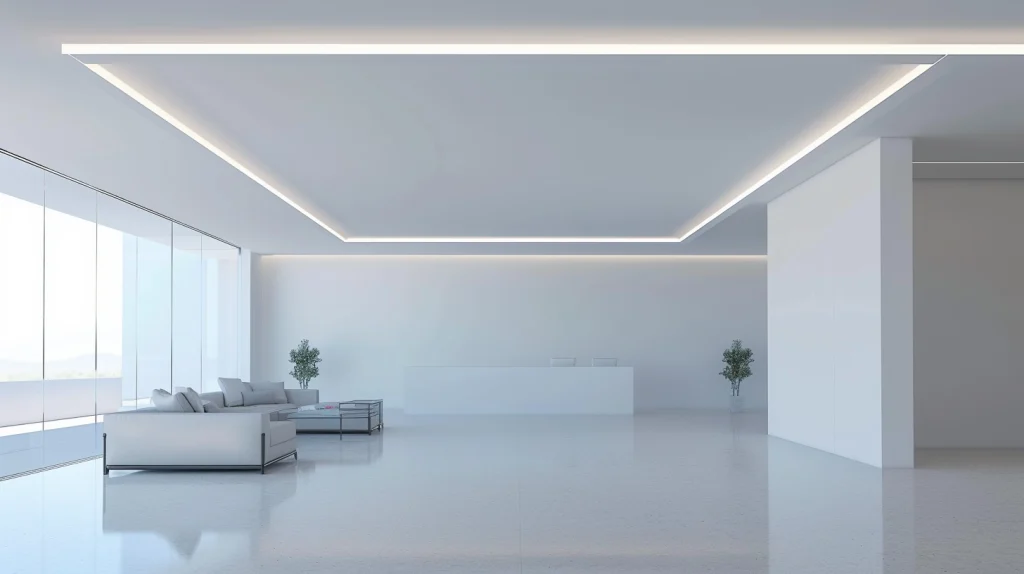
In modern interior design, minimalist ceilings are gaining popularity among those who prefer a clean, sleek look.
Simple, clean lines and monochromatic color schemes characterize minimalist ceilings.
This style works well in contemporary or Scandinavian-inspired homes, focusing on simplicity and functionality.
To achieve a minimalist ceiling look, opt for a smooth, flat surface in a neutral color, such as white or light gray.
This type of ceiling can be paired with other minimalist design elements, such as streamlined furniture and uncluttered spaces, to create a cohesive and peaceful environment.
7. Decorative Moldings
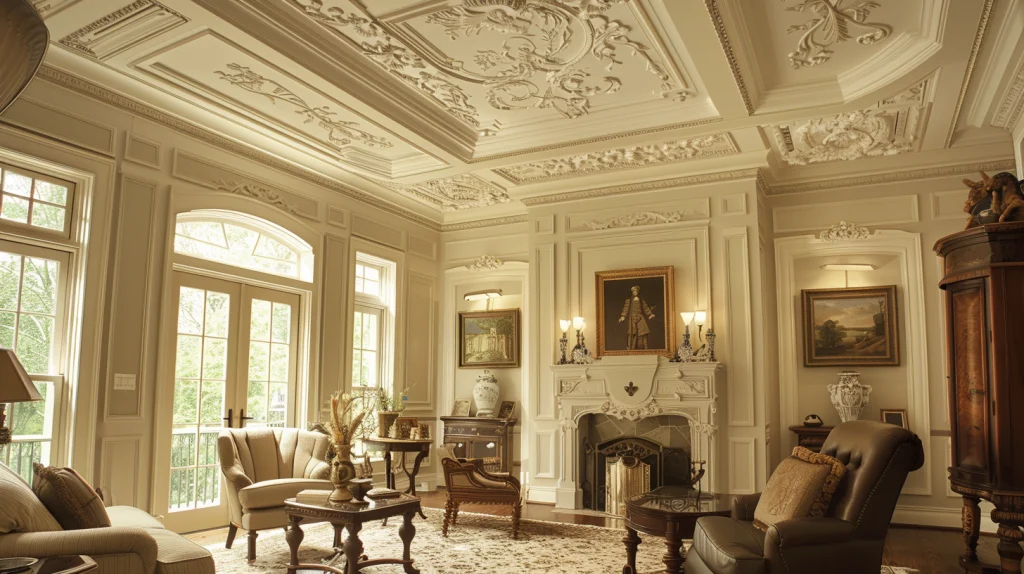
For those who prefer a more traditional or classic look, decorative moldings are timeless.
Crown molding, cove molding, and other decorative moldings can add sophistication and charm to a room.
These moldings can be made of various materials, such as plaster, wood, or polyurethane, and can be painted or stained to match the desired color scheme.
Decorative moldings work particularly well in formal spaces, such as dining rooms, living rooms, or master bedrooms, where they can create a sense of grandeur and refinement.
When incorporating decorative moldings into a room, consider the home’s overall style and choose designs that complement the existing architecture and decor.
Factors Influencing Ceiling Trend Popularity
Several factors influence the popularity of ceiling trends, including regional preferences, overall home style and architecture, and personal taste and budget considerations.
For example, exposed beam ceilings may be more popular in regions with a strong rustic or farmhouse design influence.
In contrast, coffered ceilings may be more common in areas that prefer traditional or classical architecture.
Homeowners should consider their personal style, overall aesthetic, and budget when choosing a ceiling design that best suits their needs and preferences.
Conclusion
The world of open ceiling ideas offers a wide range of options for homeowners and designers looking to transform the look and feel of their living spaces.
Each ceiling trend has unique benefits and drawbacks, from the rustic charm of exposed beams to the sophistication of coffered designs, the depth of tray ceilings, and the bold statements made by painted and wallpapered finishes.
Textured ceilings add visual interest, while minimalist designs create a clean and sleek look.
Decorative moldings bring a touch of traditional refinement to any room.
Ultimately, the popularity of these ceiling trends is influenced by regional preferences, overall home style, and personal taste.
By understanding the options available and considering the factors influencing their popularity, homeowners can make informed decisions when incorporating open ceiling ideas into their interior design plans.




